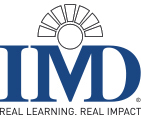- Strategy
Engaging Strategy Processes
To make good strategies companies need strategy processes with a ‘wow’ factor
A good strategy should have clear realisable objectives and a plan that focuses energy and resources on reaching them. It will also need to be set in the context of the developing digital landscape. To make good strategies companies need good strategy processes.
Too often, rather that igniting the enthusiasm, energy and engagement needed to drive strategies forward, strategy processes are boring, predictable, too financially focused and bureaucratic. In order to create a ‘wow’, a strategy process needs to be based on critical thinking and new ideas, be outward looking, and offer a clear link between vision, strategy, incentive and the operational plan.
In this edited extract from a recent article, IMD’s Professor Knut Haanaes defines what a good strategy process requires:
What characterizes a great strategy process? I would argue that a few ‘evergreens’ must be in place:
Ambitions and purpose: We can’t make great things happen unless we have ambition and unless we know the ‘why’. The ambition needs to be high enough so that we cannot get away with ‘more of the same’. If we want to grow, say, 3-4% we can usually get there through improvement. That is great, but it is not strategy. Strategy needs to include a balance of exploration (venturing into new territory) and exploitation (doing good better). Ambition is not a product of the strategy process; it has to be an input contributed by the individuals involved in the process.
Ask great questions to challenge the status quo: Are we asking ourselves what happens if we don’t change? Are we generating questions that ‘hurt’?
Take an outside-in view of your business: What do our clients see? And our competitors? Are we differentiated in a meaningful way? Are we part of our customers’ lives, or are they indifferent to us? Do they feel that we are moving in the right direction? Do they like us? Do they want us to succeed? Do we have champions amongst our most important stakeholders?
Get involved in events that make you discuss the future in a non-defensive way: I recently participated in a two-day session where the CEO of a major chemical company met researchers as well as representatives of NGOs and international organizations to discuss their sustainability agenda. Instead of the hostility of ‘us and them’ the discussions turned out to be very constructive and forward looking. A similar discussion with customers is equally important. Event orchestration matters, otherwise we end up only talking ‘amongst ourselves’.
Go for intensity: Too often I see management teams spend an hour on strategy at regular intervals. That doesn’t work. Key questions require that you throw away the key! We need to spend the time needed, and to get tired and frustrated. We need disagreement, worries and a real questioning of our current way of doing business. It is no coincidence that after the Three Mile Island incident that the GE nuclear reactor team came up with a service strategy during a deep dive with Jack Welch. He asked them to come back the following day with a new plan with the same growth targets but with no new reactors sold. That put the pressure on, and overnight is often better than developing it ‘over time’.
In addition, we should now add a set of digital and networked features:
Map IP and M&A moves, even smaller ones. What a great way to learn about our customers’ needs and competitor moves. Today we have great tools to map IP, the moves and even the preferences of our customers and competitors. Take the example of IP mapping. By looking at the patents and IP of our competitors, we can often learn about their future commitments and planned journey. Similarly, we can use tools to map out the M&A moves within our business landscape. Often it produces surprises and new insights.
Read the weak signals. By looking at weak signals we can see the early innovations that can change or businesses. Weak signals can be about new entrants, adjacent technologies or innovative markets. It can also be about new usage of our products, or new customer segments.
Reach broadly for opportunities and innovation. The strategy process needs to balance richness and reach. Richness is about going deep (often in smaller groups), whereas reach is about going broad (mobilizing large parts of the organization). Going broad is important in fact finding and testing, and today we can survey and scan our organizations easily, fast and at low cost.
Other things must be in place as well: We need to analyze which business models we can move into and what that means. We also need to distinguish megatrends (which are predictable) and uncertainties (which are not). Finally, we need to make sure we operationalize what we want to do. What are the initiatives needed? Who will drive them? What should we stop doing? What are our sprints and marathons? Where do we need quick wins and what are the long-term goals we can’t compromise on? These are not to be confused; they are very different.
IMD is a top-ranked business school, expert in developing leaders, transforming organizations and creating immediate and long-term positive impact.
ARTICLES YOU MIGHT LIKE
WEBINAR
Video recording: Cranfield’s Joe Nellis, Professor of Global Economy, prepares managers to adapt, innovate, and thrive in an uncertain future
DEVELOPING LEADERS QUARTERLY MAGAZINE AND WEEKLY BRIEFING EMAILS

































